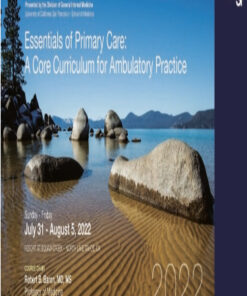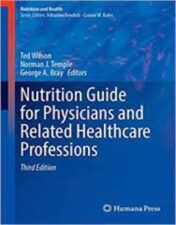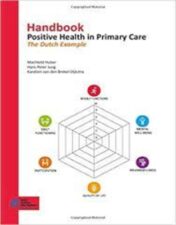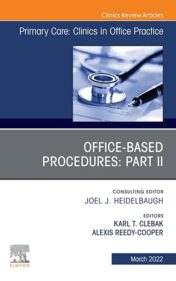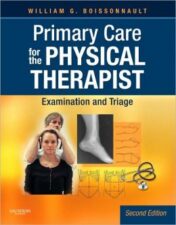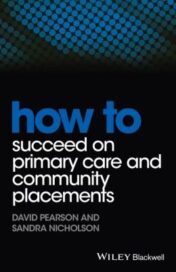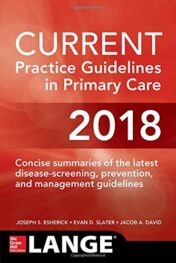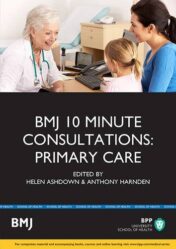Discover the Benefits of Family Medicine & Primary Care Books
Are you looking for a comprehensive resource to help you stay up-to-date on the latest developments in family medicine and primary care? Look no further than DentalBooks.net. Our selection of books offers a wealth of information on topics such as preventive health care, chronic disease management, and patient education. With our books, you can gain a better understanding of the complexities of family medicine and primary care, and learn how to provide the best possible care for your patients. Whether you’re a medical student, a practicing physician, or a healthcare professional, our books will help you stay informed and provide the highest quality of care. Browse our selection today and discover the benefits of family medicine and primary care books!
FAMILY MEDICINE & PRIMARY CARE BOOKS
UCSF CME Essentials of Primary Care: A Core Curriculum for Ambulatory Practice 2022 (CME VIDEOS)
FAMILY MEDICINE & PRIMARY CARE BOOKS
FAMILY MEDICINE & PRIMARY CARE BOOKS
Handbook of Psychiatric Disorders in Adults in the Primary Care Setting 2022 Original pdf
FAMILY MEDICINE & PRIMARY CARE BOOKS
Nutrition Guide for Physicians and Related Healthcare Professions 2022 Original pdf
FAMILY MEDICINE & PRIMARY CARE BOOKS
Handbook Positive Health in Primary Care The Dutch Example 2022 Original pdf
FAMILY MEDICINE & PRIMARY CARE BOOKS
FAMILY MEDICINE & PRIMARY CARE BOOKS
FAMILY MEDICINE & PRIMARY CARE BOOKS
UCSF Primary Care Medicine: Principles and Practices 2021 CME VIDEOS
FAMILY MEDICINE & PRIMARY CARE BOOKS
Primary Care Women’s Health: Essentials and Beyond 2021 CME VIDEOS
FAMILY MEDICINE & PRIMARY CARE BOOKS
FAMILY MEDICINE & PRIMARY CARE BOOKS
Prehospital Emergency Medicine Secrets 2021 epube+ converted pdf
FAMILY MEDICINE & PRIMARY CARE BOOKS
FAMILY MEDICINE & PRIMARY CARE BOOKS
PHTLS: Prehospital Trauma Life Support: Prehospital Trauma Life Support 9th Ed 2021 Original pdf
FAMILY MEDICINE & PRIMARY CARE BOOKS
Common Dermatologic Conditions in Primary Care 2019 ORIGINAL PDF
FAMILY MEDICINE & PRIMARY CARE BOOKS
FAMILY MEDICINE & PRIMARY CARE BOOKS
FAMILY MEDICINE & PRIMARY CARE BOOKS
FAMILY MEDICINE & PRIMARY CARE BOOKS
Advanced Health Assessment & Clinical Diagnosis in Primary Care, 5th Edition
FAMILY MEDICINE & PRIMARY CARE BOOKS
The Behavioral Health Specialist in Primary Care: Skills for Integrated Practice
FAMILY MEDICINE & PRIMARY CARE BOOKS
Primary Care for the Physical Therapist: Examination and Triage, 2nd Edition
FAMILY MEDICINE & PRIMARY CARE BOOKS
FAMILY MEDICINE & PRIMARY CARE BOOKS
Primary Care of the Child With a Chronic Condition, 5th Edition
FAMILY MEDICINE & PRIMARY CARE BOOKS
Case Studies in Geriatric Primary Care & Multimorbidity Management (ORIGINAL PDF)
FAMILY MEDICINE & PRIMARY CARE BOOKS
Supervision and Support in Primary Care (Radcliffe Professional Development)
FAMILY MEDICINE & PRIMARY CARE BOOKS
FAMILY MEDICINE & PRIMARY CARE BOOKS
CURRENT Practice Guidelines in Primary Care 2018 (ORIGINAL PDF)
FAMILY MEDICINE & PRIMARY CARE BOOKS
FAMILY MEDICINE & PRIMARY CARE BOOKS
FAMILY MEDICINE & PRIMARY CARE BOOKS
FAMILY MEDICINE & PRIMARY CARE BOOKS
Case Studies in Primary Care: A Day in the Office, 2nd Edition (PDF)
Introduction
Family Medicine & Primary Care Books provide essential information for medical professionals and students alike. These books cover a wide range of topics, from diagnosis and treatment to preventive care and patient education. They are an invaluable resource for those looking to stay up-to-date on the latest developments in family medicine and primary care. With comprehensive coverage of both common and rare conditions, these books offer detailed guidance on how to diagnose and treat patients effectively. Additionally, they provide valuable insight into the importance of preventive care and patient education, helping to ensure that patients receive the best possible care.
Overview of Family Medicine and Primary Care: A Comprehensive Guide to the Principles and Practice
Family Medicine and Primary Care: A Comprehensive Guide to the Principles and Practice is an essential resource for medical professionals, students, and anyone interested in learning more about family medicine and primary care. This comprehensive guide provides a thorough overview of the principles and practice of family medicine and primary care, from the basics of diagnosis and treatment to the latest advances in research and technology.
The book begins with an introduction to the field of family medicine and primary care, including its history, scope, and importance. It then delves into the core concepts of family medicine and primary care, such as patient-centered care, preventive medicine, and evidence-based practice. The book also covers topics such as chronic disease management, mental health, geriatrics, and end-of-life care.
In addition to providing an overview of the principles and practice of family medicine and primary care, this book also offers practical advice on how to best serve patients. It includes information on communication skills, cultural competency, and ethical considerations. It also provides guidance on how to navigate the healthcare system, including insurance coverage and reimbursement.
This book is an invaluable resource for medical professionals, students, and anyone interested in learning more about family medicine and primary care. It provides a comprehensive overview of the principles and practice of family medicine and primary care, from the basics of diagnosis and treatment to the latest advances in research and technology. It also offers practical advice on how to best serve patients, including communication skills, cultural competency, and ethical considerations. With its clear and concise writing style, Family Medicine and Primary Care: A Comprehensive Guide to the Principles and Practice is an essential resource for anyone looking to gain a better understanding of family medicine and primary care.
The Role of Technology in Family Medicine and Primary Care
Technology has become an integral part of family medicine and primary care. It is used to improve patient care, increase efficiency, and reduce costs. Technology can be used to diagnose and treat illnesses, monitor vital signs, provide preventive care, and manage chronic conditions.
In the past, family physicians relied on physical exams and patient histories to diagnose and treat patients. Today, technology has enabled family physicians to use a variety of tools to diagnose and treat patients. These tools include electronic health records (EHRs), telemedicine, and point-of-care testing.
EHRs are digital versions of paper medical records. They allow physicians to store and access patient information quickly and easily. EHRs also enable physicians to share patient information with other healthcare providers, such as specialists or hospitals. This helps ensure that all providers have access to the same information and can coordinate care more effectively.
Telemedicine is the use of technology to provide medical care remotely. It allows physicians to consult with patients via video conferencing, telephone, or email. This enables physicians to provide care to patients who may not be able to come into the office due to distance or mobility issues.
Point-of-care testing is the use of technology to perform diagnostic tests in the physician’s office. This eliminates the need for patients to go to a lab for testing. Point-of-care testing can provide results quickly, which can help physicians make decisions about treatment more quickly.
Technology has also enabled physicians to provide preventive care more effectively. For example, physicians can use technology to track immunization schedules, remind patients of upcoming appointments, and monitor chronic conditions. This helps ensure that patients receive the preventive care they need to stay healthy.
In summary, technology has revolutionized family medicine and primary care. It has enabled physicians to diagnose and treat patients more quickly and accurately, provide preventive care more effectively, and manage chronic conditions more efficiently. Technology has also enabled physicians to provide care to patients who may not be able to come into the office due to distance or mobility issues. As technology continues to evolve, it will continue to play an important role in family medicine and primary care.
Strategies for Improving Access to Quality Primary Care Services
Access to quality primary care services is essential for the health and wellbeing of individuals, families, and communities. Primary care services provide preventive care, diagnosis, treatment, and management of chronic conditions, as well as referrals to specialists when needed. Unfortunately, many people lack access to quality primary care services due to a variety of factors, including cost, geographic location, language barriers, and cultural differences. To improve access to quality primary care services, there are several strategies that can be implemented.
One strategy is to increase the number of primary care providers in underserved areas. This can be done by providing incentives to attract more providers to these areas, such as loan repayment programs or scholarships. Additionally, expanding the scope of practice for non-physician providers, such as nurse practitioners and physician assistants, can help to fill the gap in primary care services.
Another strategy is to increase the use of telemedicine and other technology-based solutions. Telemedicine allows patients to receive care from a provider remotely, which can be especially beneficial for those who live in rural areas or have difficulty accessing traditional healthcare services. Additionally, technology-based solutions can help to streamline processes and reduce administrative burden, allowing providers to focus on patient care.
Finally, increasing access to affordable health insurance is an important step in improving access to quality primary care services. Expanding Medicaid eligibility and offering subsidies for private insurance plans can help to make health insurance more accessible and affordable for those who need it most. Additionally, providing education and outreach about available health insurance options can help to ensure that individuals are aware of their coverage options.
By implementing these strategies, we can work towards improving access to quality primary care services for all individuals, regardless of their background or circumstances. With increased access to primary care services, individuals will be better able to manage their health and prevent serious illnesses, leading to improved health outcomes for everyone.
Understanding the Impact of Social Determinants of Health on Family Medicine and Primary Care
Social determinants of health (SDOH) are the conditions in which people are born, grow, live, work, and age. These conditions are shaped by the distribution of money, power, and resources at global, national, and local levels. SDOH have a significant impact on family medicine and primary care, as they can influence access to healthcare, quality of care, and health outcomes.
Family medicine and primary care providers are often the first point of contact for individuals seeking medical care. As such, they are uniquely positioned to identify and address SDOH that may be impacting their patients’ health. By understanding the social context of their patients’ lives, providers can better tailor their care plans to meet the needs of their patients.
For example, if a patient is living in poverty, a provider may need to consider how this affects their ability to access healthcare services. They may need to provide additional support or resources to help the patient access care, such as providing transportation assistance or connecting them with community resources. Additionally, providers may need to consider how poverty impacts the patient’s diet and nutrition, as well as their access to safe housing and clean water.
In addition to poverty, other SDOH can also have an impact on family medicine and primary care. For instance, racism and discrimination can lead to disparities in healthcare access and outcomes. Providers must be aware of these issues and strive to create an equitable and inclusive environment for all patients. This includes providing culturally competent care and addressing any language barriers that may exist.
Finally, providers should also consider how environmental factors can affect their patients’ health. This includes air and water pollution, exposure to hazardous materials, and access to green spaces. By understanding the impact of these factors, providers can better assess their patients’ risk for certain illnesses and diseases and provide appropriate interventions.
Overall, it is important for family medicine and primary care providers to understand the impact of SDOH on their patients’ health. By doing so, they can provide more effective and tailored care that meets the needs of their patients.
Exploring the Intersection of Mental Health and Primary Care in Family Medicine
Exploring the intersection of mental health and primary care in family medicine is an important endeavor that can help to improve the overall health and wellbeing of individuals and families. Mental health is a critical component of overall health, and it is essential for primary care providers to be able to recognize and address mental health issues in their patients.
Family medicine is a unique field of medicine that focuses on providing comprehensive care to individuals and families. Family physicians are trained to provide preventive care, diagnose and treat acute and chronic illnesses, and manage complex medical conditions. In addition, they are also trained to recognize and address mental health issues in their patients.
The intersection of mental health and primary care in family medicine is an area of increasing importance. Mental health issues can have a significant impact on physical health, and vice versa. For example, depression can lead to poor nutrition, lack of exercise, and other unhealthy behaviors, which can lead to physical health problems. Conversely, physical health problems can lead to depression and other mental health issues. Therefore, it is essential for primary care providers to be able to recognize and address both physical and mental health issues in their patients.
In order to effectively explore the intersection of mental health and primary care in family medicine, it is important to understand the various components of mental health. This includes understanding the different types of mental health disorders, such as anxiety, depression, bipolar disorder, and schizophrenia, as well as the various treatments available for these disorders. It is also important to understand the role of lifestyle factors, such as diet, exercise, and stress management, in maintaining mental health.
In addition, it is important to understand the various ways in which mental health and primary care intersect. For example, primary care providers may need to refer patients to mental health professionals for further evaluation and treatment. They may also need to provide education and support to patients and their families about mental health issues. Finally, primary care providers may need to coordinate care between mental health professionals and other healthcare providers, such as specialists or pharmacists.
Exploring the intersection of mental health and primary care in family medicine is an important endeavor that can help to improve the overall health and wellbeing of individuals and families. By understanding the various components of mental health, recognizing mental health issues in their patients, and coordinating care between mental health professionals and other healthcare providers, primary care providers can play an important role in improving the mental health of their patients.
Conclusion
Family medicine and primary care books are an invaluable resource for medical professionals, providing comprehensive information on a wide range of topics related to family medicine and primary care. These books provide detailed information on diagnosis, treatment, and prevention of common illnesses and diseases, as well as guidance on how to best manage chronic conditions. They also offer advice on lifestyle changes that can help improve overall health and wellbeing. With the right family medicine and primary care book, medical professionals can stay up-to-date on the latest developments in the field and ensure they are providing the best possible care to their patients.

